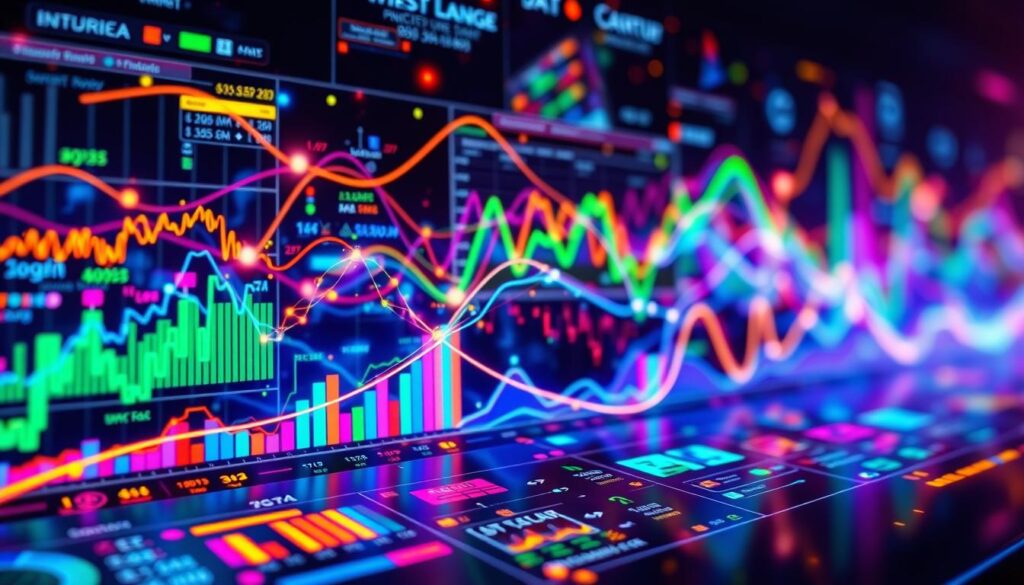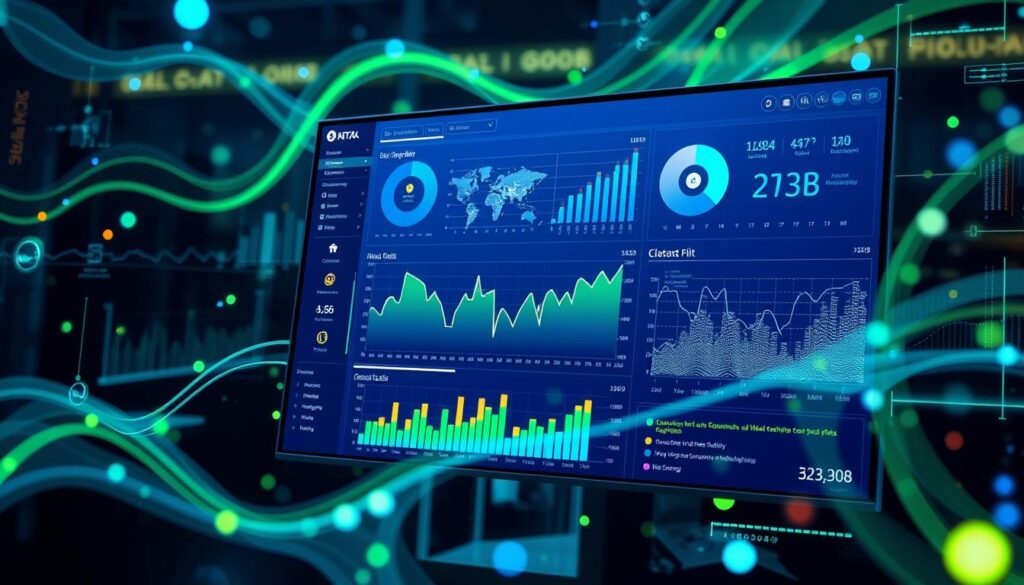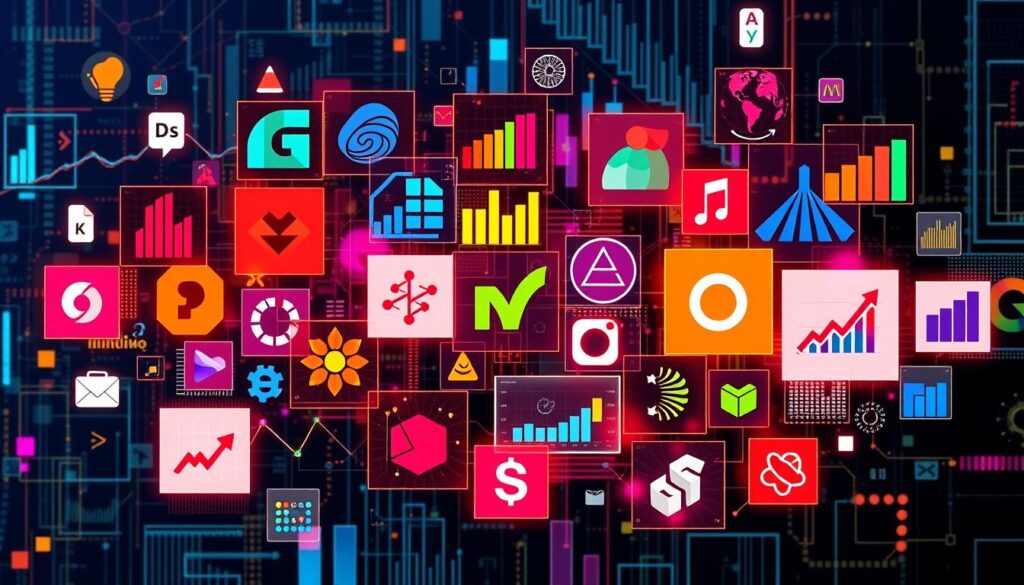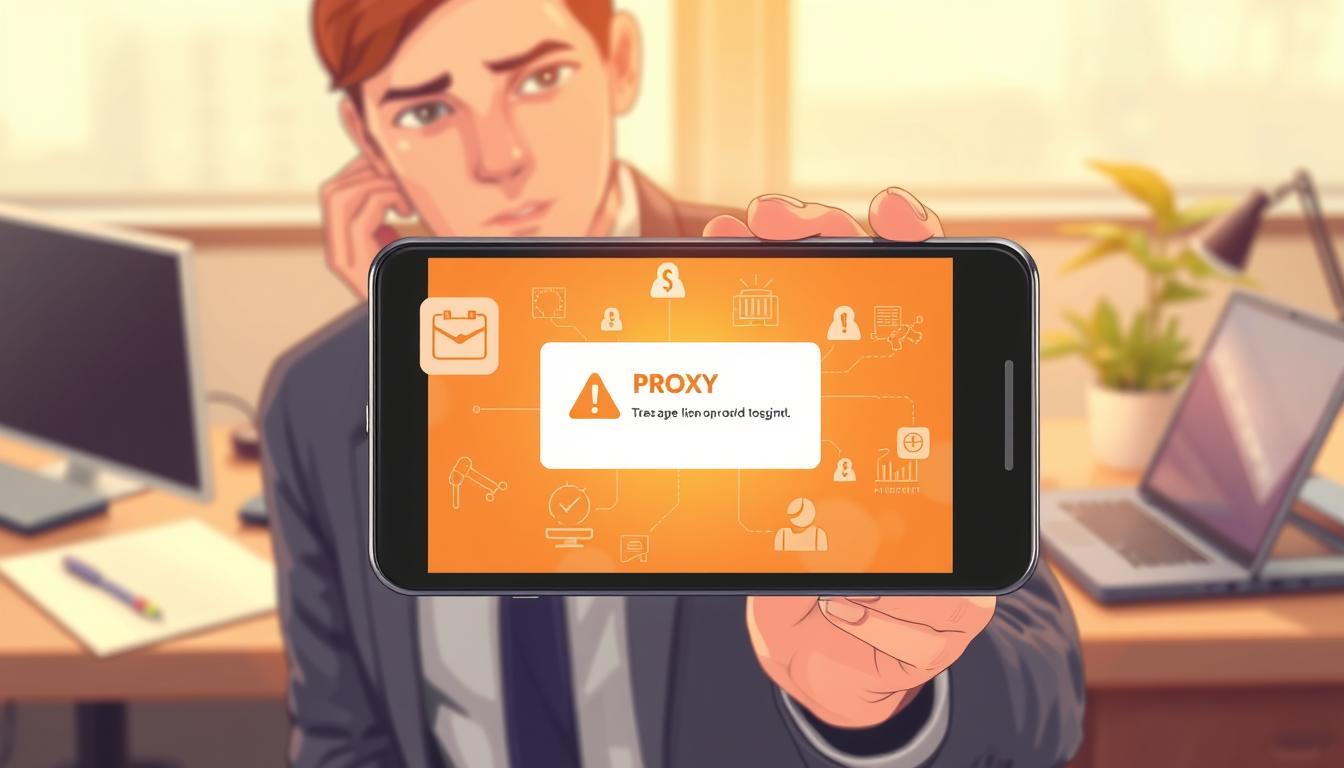FTC disclaimer: This post contains affiliate links and I will be compensated if you make a purchase after clicking on my link.
In today’s world, turning complex data into easy-to-understand visuals is key. But which software is the best for this task? Find out the top 10 tools that can make your data analysis better.
Key Takeaways
- Discover the most powerful data visualization tools for businesses in 2024.
- Understand the importance of data visualization and its role in effective communication.
- Explore the key features that set the best data visualization software apart.
- Learn about the pros and cons of leading data visualization platforms like Tableau, Microsoft Power BI, and Qlik Sense.
- Identify the best data visualization software for your unique business needs and budget.
What is Data Visualization?
Data visualization shows information in pictures. It uses tools to make data easy to see. These tools turn numbers into pictures like bar graphs and maps.
It helps us understand big data. By turning numbers into visual representations of data, it makes insights clear. It’s great for anyone who works with data.
There are many types of charts, like bar and pie charts. Google Charts has 18 types. Tableau is a big tool with millions of users.
| Data Visualization Tool | Key Features | User Base |
|---|---|---|
| Zoho Analytics | 500+ data sources, data preparation studio, drag-and-drop visualization builder, AI assistant | 500,000+ businesses, 2 million+ users |
| Tableau | Data integration, advanced analytics, interactive dashboards, real-time data updates | Millions of users and community members |
| Microsoft Power BI | Seamless integration with Microsoft products, user-friendly report creation, data analysis capabilities | Widely used by businesses |
Good data visualization is key today. It turns complex data into easy-to-see pictures. It helps us find patterns and trends.
“Visualizations are only as good as the data quality behind them, emphasizing the importance of accurate and reliable data for effective data visualization.”
In short, data visualization is about showing data in pictures. It helps us understand information graphics and data insights quickly. It turns complex data into useful insights.

Importance of Data Visualization Tools
Data visualization tools are key to understanding complex data. They turn raw data into easy-to-see formats. This helps users spot patterns and trends that are hard to see in text alone.
These tools make data easier to understand. This leads to better decision-making in business. It helps make choices that are more informed and strategic.
Understanding Complex Data
Data visualization is crucial for complex datasets. Tools like charts and graphs show data in a clear way. This makes it easier to see than in spreadsheets or reports.
Visualizing data reveals insights and patterns that might be missed. This helps make decisions that are more informed and strategic.
Effective Communication
Data visualization tools are also key for sharing insights. Visuals make complex information easy to understand. This is true for both stakeholders and the general audience.
By making data visually appealing, these tools help in communication. They support data-driven talks. This leads to better teamwork and alignment in an organization.
| Key Benefits of Data Visualization Tools | Description |
|---|---|
| Improved Data Understanding | Graphics and visualizations help users quickly identify patterns, trends, and anomalies within complex datasets. |
| Enhanced Decision-Making | Data-driven insights derived from visualizations support more informed and strategic business decisions. |
| Effective Communication | Visuals convey information more clearly and concisely than textual data, enabling better stakeholder engagement and alignment. |

“Data visualization is the graphical representation of information and data. By using visual elements like charts, graphs, and maps, data visualization tools provide an accessible way to see and understand trends, outliers, and patterns in data.”
Key Features of Data Visualization Software
Choosing the best data visualization software is key. Look for features that help with data analysis and decision-making. Important features include seamless data connectivity and interactive dashboards.
Data Connectivity
Good data visualization software connects to many data sources. This includes databases, spreadsheets, and cloud services. It gives you a complete view of your data for better business decisions.
Interactive Dashboards
Interactive dashboards are a must-have. They let you explore data, apply filters, and dive into details. This makes data analysis easier and helps you understand your business better.
The best data visualization software has many features. They help with data integration and creating dashboards. These tools help you use your data to make smart, informed decisions.
| Feature | Importance | Top Tools |
|---|---|---|
| Data Connectivity | Enables integration of data from multiple sources for a comprehensive view | Tableau, Power BI, Qlik Sense |
| Interactive Dashboards | Allows for exploration, filtering, and drilling down into data insights | Tableau, Power BI, Sisense |
| Real-Time Data Visualization | Provides up-to-date insights for timely decision-making | Domo, Qlik Sense, Zoho Analytics |
| Data Integration | Seamlessly combines data from various sources for a holistic view | Power BI, Sisense, Looker |
Focus on these key features to get the most from your data visualization software. It will help you make better decisions and grow your business.

Best Data Visualization Software
Data visualization software has many options, each with special features. Choosing the right tool can change how you make decisions. We’ll look at the top 10 data visualization software to help you make better choices.
Microsoft Power BI and Tableau Desktop are leaders, with a 4.5 rating from users. They are great at connecting data and making dashboards easy to use. This makes them popular choices for many companies.
Sisense got a 4.0 rating, showing it’s user-friendly but can be tricky for beginners. Domo and Google Analytics scored 3.5. They have good features but are harder to learn and have some limits.
Salesforce Einstein Analytics Platform also got a 3.5 rating. It’s easy for business users and has strong analytics. SAP Analytics Cloud scored 3.0, with real-time analytics but is hard to learn and needs other SAP products.
Zoho Analytics, Chartio, and others scored lower (3.0 and below). This means they might have issues that affect how well they work and how happy users are.
Choosing the right data visualization tool is key for getting insights from data. The market is growing fast, expected to hit $19.20 billion by 2027. This shows how important these tools are becoming.
When picking a tool, think about how well it handles data and visualizes it. The best tool for analyzing data might not always be the best for showing it.
The top tools include ThoughtSpot, Tableau, Power BI, Qlik Sense, Sisense, Domo, Looker, Zoho Analytics, Yellowfin, MicroStrategy, Metabase, AWS QuickSight, and SAP BusinessObjects. Each has its own strengths, meeting different needs in various industries.

“Data visualization is the representation of data in a pictorial or graphical format. It enables decision-makers to see analytics presented visually, so they can grasp difficult concepts or identify new patterns.”
Tableau
Tableau is a top tool for data visualization. It changes how companies look at business intelligence and analytics. Tableau Desktop lets users find hidden insights in their data. This helps them make better decisions.
Tableau is easy to use, thanks to its simple interface and drag-and-drop tools. It’s great for both new and experienced data analysts. They can make beautiful dashboards and reports easily. Users can connect data from many sources, like spreadsheets and databases.
Tableau’s interactive dashboards are a big plus. They let users explore data in real-time. This way, they can find patterns and trends they might miss otherwise. With Tableau, users can dive deep into data and use advanced tools to find key insights.
Tableau is not just for visualizing data. It also blends data from different sources. This gives users a complete view of their business. It helps them make smarter, data-driven choices.
“Tableau has changed how we analyze data. Its easy-to-use interface and strong tools have helped our team find insights we didn’t see before. This has moved our business forward in a strategic way.”
Tableau Desktop is perfect for anyone who works with data. It’s great for both data analysts and business professionals. With its strong features and easy design, Tableau is a top choice for companies wanting to use their data fully.
Microsoft Power BI
Microsoft Power BI is a top tool for data and business insights. It’s great for groups using Microsoft products. It helps make smart decisions with its advanced analytics.
Integration with Microsoft Ecosystem
Power BI works well with Microsoft products. It’s part of Office 365, making it easy to use with Excel, SharePoint, and Dynamics 365. This makes data work easier for those already using Microsoft.
Advanced Analytics
Power BI is known for its advanced analytics. It has cool features like change analysis and AI insights. These help users find deeper insights and make better choices.
It also has great data modeling and visualization. This lets users make dashboards that show important data clearly.
Microsoft Power BI is a leader in analytics and business intelligence, says Gartner. It’s a top pick for those needing a strong data tool.
“Microsoft Power BI is extremely powerful with a wealth of data source connectors, very user-friendly, and exceptional data visualization capabilities, which led to it earning the Editors’ Choice honor.”
Power BI is a strong player in the data market. It connects well with Microsoft products and has advanced analytics. It’s a great choice for those wanting to get the most from their data.
Qlik Sense
Qlik Sense is a top Qlik Analytics Platform for businesses. It helps them explore data and make smart choices. It’s known for its great data visualization, easy Qlik Hybrid Deployment, and simple tools for users.
Qlik Sense is great at handling big, complex data. It ranked #1 in a survey for its performance and ease of use. This is better than Tableau and Power BI, which can be slow with lots of data.
Qlik Sense offers many ways to deploy, like SaaS, on-premise, and private cloud. This Qlik Hybrid Deployment makes it easy to fit into any IT setup. It ensures a smooth analytics experience for everyone.
Qlik Sense also has great self-service tools. It has libraries for users to make standard visualizations. Plus, it lets users easily add Qlik Sense to their apps and workflows.
In short, Qlik Sense is a strong Qlik Sense Data Visualization platform. It’s known for its advanced analytics, flexible deployment, and easy-to-use tools. It helps businesses turn complex data into useful insights and make better decisions.
| Feature | Qlik Sense | Tableau | Power BI |
|---|---|---|---|
| Data Handling | Excels at processing large, complex datasets | Struggles with high volumes of disconnected data | Limits data sets to 1GB in Power BI Pro, requiring Premium upgrade |
| Deployment Options | Offers flexible Qlik Hybrid Deployment with SaaS, on-premise, and private cloud | Limited to on-premise and cloud-based options | Primarily cloud-based with limited on-premise options |
| Governed Self-Service | Strong governed libraries for controlled content creation | Relies more on self-service without robust governance | Provides some governance features, but less robust than Qlik Sense |
| API Integration | Extensive API integration capabilities to embed visualizations | Limited API integration options compared to Qlik Sense | Offers APIs for embedding, but may require additional costs |
Sisense
Sisense is an analytics platform that helps users get insights from many sources. It’s known for its embedded analytics, which include open-source integration and RestAPI access. The platform also has advanced data modeling and visualization, and can handle big datasets and complex analytics.
Embedded Analytics
Sisense’s embedded analytics are a big plus. It lets businesses add data visualization and analytics to their apps, websites, and portals. This way, companies can give their customers, partners, and employees custom analytics, improving engagement and decision-making.
Scalability
Sisense is built to handle big and complex data sets. It has advanced data modeling and processing, so users can get insights from huge data volumes without slowing down.
| Metric | Value |
|---|---|
| Sisense Pricing | Pricing information is available upon request |
| Sisense Scalability | Capable of handling large and complex data sets |
| Sisense Embedded BI | Seamless integration of data visualization and analytics into applications |
Sisense is a strong choice for organizations wanting to get insights from their data. It offers embedded analytics and scalability, helping companies deliver custom analytics to their stakeholders.
Domo
Domo is a top choice for turning complex data into useful insights. It has a user-friendly design and powerful tools. This makes it a leading data visualization software for businesses.
Domo offers great value for money. It has a high return on investment, with one study showing a 345% return. Another study found a 455% return. Users have also seen over $1 million in extra revenue.
Domo is not just about money. It’s also recognized for its analytics and business intelligence. It’s a Challenger in the 2024 Gartner Magic Quadrant. Forrester says it’s worth $16 million and pays back in less than six months.
Domo’s dashboards and analytics are easy to use. This has made it the best in the 2023 Dresner Advisory Services study. It’s also a Customers’ Choice in Gartner’s Voice of the Customer report.
Domo works well for all kinds of users. It has over 1,000 connectors for easy data integration. It can handle big datasets quickly, making it efficient.
Domo is always improving. Its cloud-native design gives users flexibility and speed. It has tools for custom apps, data governance, and a big user community. Domo is a complete solution for data visualization.
“Domo has been a game-changer for our business. The platform’s intuitive dashboards and advanced analytics capabilities have enabled us to make more informed decisions and drive significant growth.”
In summary, Domo is a top choice for data visualization. It has great features, a high ROI, and is recognized by industry leaders. It’s perfect for data analysts and business leaders looking to use their data fully.
Best Data Visualization Software
The data visualization software market is growing fast. Now, there are many Top Data Visualization Tools and Leading BI Software to choose from. These tools help turn complex data into easy-to-understand insights.
Tableau, Microsoft Power BI, Qlik Sense, and Sisense are leaders in this field. Tableau is easy to use and connects to many data sources. Power BI works well with Microsoft tools. Qlik Sense has advanced analysis features, and Sisense is great for complex data.
Zoho Analytics and Looker are good for those on a budget. Zoho Analytics has many features for data visualization. Looker is great for big companies with detailed security.
Domo and Metabase are new players worth checking out. Domo has tools for managing and analyzing data. Metabase is open-source and easy to use.
No matter your needs, the Top Data Visualization Tools, Leading BI Software, and Innovative Data Analytics Platforms in this article can help. They make it easier to use your data to make smart decisions.
| Software | Key Features | Pros | Cons |
|---|---|---|---|
| Tableau | – Seamless data connectivity – Interactive dashboards – Advanced analytics | – User-friendly interface – Wide range of data source integrations | – Can be expensive for smaller organizations – Steep learning curve for new users |
| Microsoft Power BI | – Integration with Microsoft ecosystem – Robust data modeling and reporting – Artificial intelligence capabilities | – Secure and scalable – Tight integration with other Microsoft tools | – Challenging for beginners – Limited in-depth customization options |
| Qlik Sense | – Advanced data analysis features – Intuitive drag-and-drop interface – Scalable for large enterprises | – Powerful data visualization capabilities – Flexible and customizable | – Can be expensive – Limited customer support |
| Sisense | – Robust data modeling and analytics – Embedded analytics for SaaS applications – Scalability for large data volumes | – Comprehensive data insights – Suitable for complex data analysis | – Steep learning curve – Premium pricing |
When picking data visualization software, think about data connection, customization, analysis, and ease of use. By looking at these factors, you can find the Top Data Visualization Tools, Leading BI Software, and Innovative Data Analytics Platforms that meet your needs. This way, you can get the most out of your data.
“Data visualization is the key to unlocking the true value of data in today’s information-driven world.”
Looker
Looker is a Data Visualization and Business Intelligence Platform. It helps users easily explore and visualize their data. It offers many visualization options, from simple charts to interactive dashboards.
Looker is great for self-service data exploration and reporting. Users can get insights from their data without needing to be tech experts. This is thanks to Looker’s easy-to-use interface and wide range of data connectors.
Looker also has advanced features. It uses LookML to organize data from different sources. This makes sure users have a solid and reliable data foundation.
Looker’s Duet AI suite works with Google to make data analysis easier. It automates the creation of presentations and visualizations. This helps users get insights more quickly and efficiently.
However, Looker has some downsides. It can slow down with large datasets. It also needs manual operation for data exploration, requiring SQL queries for changes.
Looker’s pricing is complex. It depends on users, data volume, and customization levels. But, its features and Google Cloud integration make it a strong choice in data visualization.
| Feature | Looker | Tableau |
|---|---|---|
| Data Connectivity | Over 800 data source connectors | Extensive data integration options |
| Analytics Capabilities | Utilizes LookML for organizing data, Duet AI for conversational analysis | Incorporates advanced analytics features like descriptive statistics, forecasting, and predictive modeling |
| Visualization Options | Offers a range of visualization types, including custom dashboards | Provides an array of visualization types, including advanced options like heat maps and tree maps |
| Ease of Use | Requires manual operation and SQL knowledge for configuration changes | Offers a drag-and-drop interface for creating visualizations without coding |
| Pricing | Starts around $35,000 a year, with a complex pricing structure | Varies with different user types, ranging from $15 to $70 per user per month |
In conclusion, Looker is a top-notch Business Intelligence Platform. It’s great for self-service data exploration and visualization. Its Google Cloud integration and advanced analytics make it a good choice for data teams. But, its pricing and manual data exploration might be tough for smaller teams or those wanting an easier experience. It’s important to check if Looker fits your business needs.
Zoho Analytics
Zoho Analytics is a top pick for data analytics and visualization. It’s affordable and packed with features. This makes it great for businesses looking for a flexible tool.
Affordability
Zoho Analytics is very affordable. It costs less than many other tools, making it perfect for all sizes of businesses. Its pricing plans fit many budgets, so everyone can use it.
Customization
Zoho Analytics is also super customizable. It has over 50+ chart types for making dashboards. Plus, it works with over 300+ data sources, like spreadsheets and databases.
It also has a cool AI feature called Zia. Zia helps users understand data better. The platform also predicts trends and finds odd data points, helping with decisions.
Even though it might take some time to learn, Zoho Analytics is worth it. It’s a great choice for businesses wanting a cost-effective and flexible tool.
| Feature | Description |
|---|---|
| Data Connectivity | Zoho Analytics integrates with over 300+ data sources, including spreadsheets, cloud storage, databases, and third-party business applications. |
| Chart Types | Zoho Analytics offers over 50+ chart types for data visualization, allowing users to create visually compelling dashboards. |
| Cost-Effectiveness | Zoho Analytics has a lower Total-Cost-of-Ownership (TCO) compared to other data analytics solutions, making it a more affordable option. |
| AI-Powered Insights | Zoho Analytics incorporates natural language processing, predictive AI features, and anomaly detection to enhance the decision-making process. |
Yellowfin
In the world of data, Yellowfin stands out. It offers a top-notch platform for all kinds of businesses. With Yellowfin Data Visualization and Yellowfin BI Software, it helps users get the most from their data. This leads to better, data-driven choices.
Yellowfin is easy to use, even for those not tech-savvy. It has many visual tools like charts and maps. This lets both experts and non-experts see their business in a new light.
Yellowfin is great at giving users quick, useful insights. It uses AI to spot important business moments. It’s also affordable and can grow with your business, no matter its size.
Yellowfin keeps getting better with features like Guided NLQ and Yellowfin Present. These tools help users dive into data, make reports, and share findings. This turns data into a key asset for any company.
Yellowfin is known worldwide and is growing fast. It’s a go-to for Yellowfin Data Visualization, Yellowfin BI Software, and Yellowfin Analytics Platform. It’s all about making data work for you, helping your business grow.
“Yellowfin’s data visualization has changed how we make decisions. Its easy-to-use design and connection to our data have uncovered insights we never saw before.”
MicroStrategy
MicroStrategy is a top platform for data visualization and business intelligence. It meets the needs of big companies looking for strong analytics. Over 13,959 companies use its solutions, making it a big name in the field with a 1.95% market share.
It connects to over 200 data sources. This lets users easily mix and analyze data from many places. Its advanced analytics features make it a great choice for deep data insights.
The platform has an easy-to-use dashboard and tools. It’s simple to navigate, helping users quickly work with data. The data dossier feature lets users create custom visualizations easily.
MicroStrategy is great for big companies because it scales well. It also offers personalization, like mobile access and team collaboration tools. This makes it appealing to businesses looking for specific data solutions.
MicroStrategy and Microsoft Power BI are both big in business intelligence. Power BI is known for its easy use and Microsoft integration. MicroStrategy stands out for its scalability and personalization. The best choice depends on what a company needs.
In summary, MicroStrategy is a strong choice for businesses wanting to use their data fully. Its wide connectivity, scalability, and easy-to-use interface make it a top pick. It’s a leading player in the data visualization world.
Metabase
Looking for a great data visualization and business intelligence tool? Metabase is a top pick. It’s open-source and packed with features to help you understand and share your data.
Metabase Data Visualization is its main strength. It offers many visualization options, from simple charts to complex ones. You can make interactive dashboards and explore data easily, perfect for Metabase Analytics and self-service data analysis.
Metabase Open-Source BI is known for its easy-to-use interface. It’s made for everyone, from data experts to beginners. No matter your SQL skills, Metabase lets you dive into your data and find important insights.
- Trusted by over 60,000 companies for analytics
- Offers a range of data visualization options, from basic charts to advanced visualizations
- Provides features like ad-hoc querying, dashboard creation, and data exploration
- User-friendly interface that caters to users with or without SQL knowledge
- Affordable plans with additional security, governance, and cloud deployment options
Want a budget-friendly, easy-to-use data visualization tool? Metabase is a great choice. It has lots of features and a big community of users. It’s perfect for any size organization looking to use their data well.
“Metabase has been a game-changer for our business. The intuitive interface and powerful visualization tools have made data analysis accessible to everyone on our team, not just the data experts.”
Conclusion
In today’s world, turning complex data into easy-to-understand visuals is key for making smart choices. The data visualization software market has many options. Each one has special features and abilities.
When picking the right software, look at how easy it is to use, how well it connects to data, and what visuals it offers. Also, think about how well it works with others. This helps find the best tool for your needs and gets the most out of your data.
The top tools mentioned, like Tableau and Microsoft Power BI, show the wide range of choices. They are known for being easy to use, handling big data, and offering many ways to show data. They help both tech experts and non-tech users.
The need for data-driven decisions will keep growing. So, the role of data visualization software and top data analytics platforms will get even bigger. Using the right data visualization software helps understand complex data better. It makes sharing insights easier and leads to better decisions for your business.








